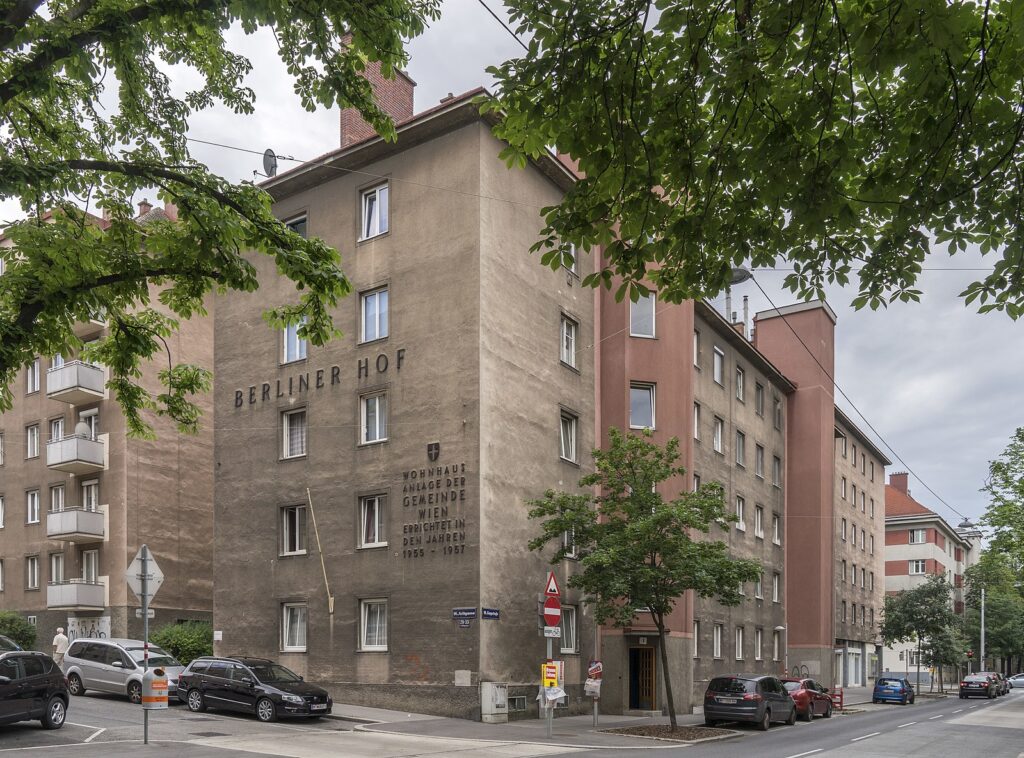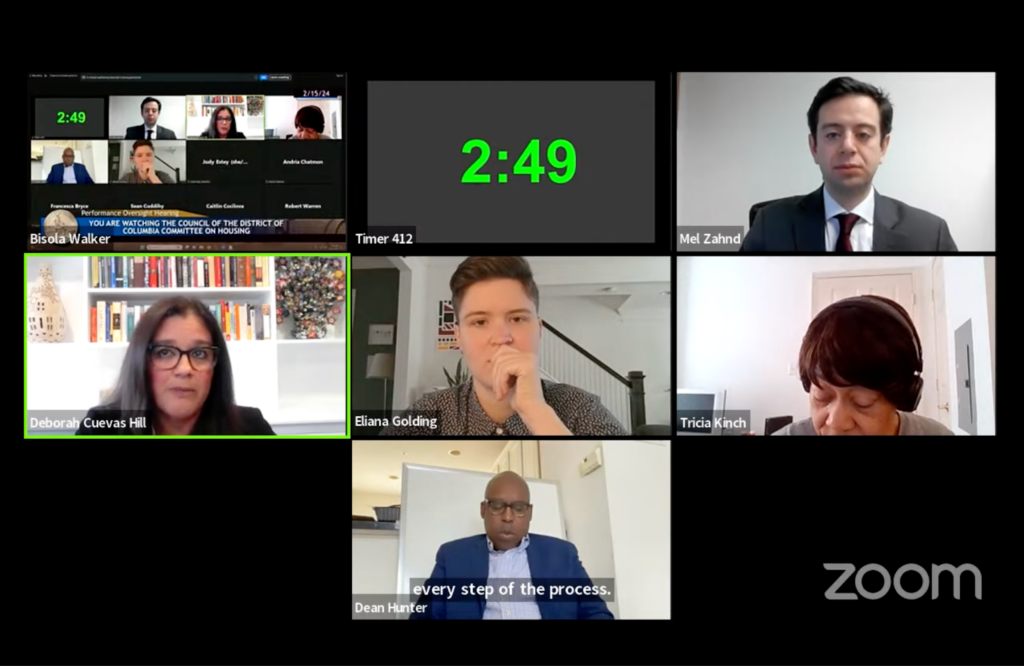It’s no secret it’s expensive to rent in D.C., especially for people who make below the city’s median income of $152,000 for a family of four. Despite D.C. investing hundreds of thousands of dollars each year in building and preserving affordable housing, one in 10 District residents are housing insecure, according to a recent report from the Urban Institute. Black residents and families are at the greatest risk, with many being priced out of the city they’ve long called home.
This indicates a dire need for new, affordable housing, several D.C. councilmembers argued at a public roundtable on Nov. 28. But over two-thirds of the new apartments currently being built in the city will be luxury units, far out of reach for the average Washingtonian, said Robert White, the Housing Committee chair and an at-large councilmember.
“We’re spending hundreds of thousands of dollars a year, and barely making a dent in the housing needs,” White said in an interview after the roundtable. “So we have to start asking ourselves if the model we’re using or models we’re using are failing.”
One solution the Housing Committee explored in its hearing: social housing. The model, popular in Europe, subsidizes mixed-income, government-owned housing. It’s a key part of Ward 4 Councilmember Janeese Lewis George’s proposed Green New Deal for Housing Act.
Supporters hope the idea could help D.C. build more housing that’s affordable for the lowest-income residents and reduce income segregation in the city, all while delivering more units for less cash. But developers warned at the hearing that construction of social housing isn’t guaranteed to be cheaper than traditional development. And the idea will work only if D.C. can improve on its often-criticized public housing program, White and public housing residents said.
“What we’re exploring here is how we finance, build and manage housing differently,” White said.
The social housing model is different from public housing, though both are government-owned. Under social housing, higher-income tenants pay full-price rent, helping to subsidize rent for lower-income tenants. This model creates long-term sustainability, advocates say, and means communities are more income-diverse and better financed than public housing, where many tenants complain of poor conditions and disrepair.
Lewis George initially introduced her Green New Deal for Housing Act in 2022. It would create an office to support social housing in D.C. by using part of the budget of the Housing Production Trust Fund (HPTF). The latest version of the bill — co-introduced in March by six of her colleagues, including White — calls for a program serving 30% extremely low-income tenants, 30% low- and moderate-income tenants, and 40% tenants paying market value.
“D.C. desperately needs affordable housing, especially the deeply affordable housing that is far too rare in our city and that doesn’t lend itself to a profit model of private development,” Lewis George said at the hearing. “If we leave it to the market alone, we will not get there.”
Supporters of social housing argue it will provide affordable units while avoiding some of the segregation seen in current programs. Public housing is, by definition, segregated by income, and while Housing Choice Vouchers are meant to allow people on housing subsidies to choose where they live, high rents and illegal discrimination can limit voucher holders to certain buildings and neighborhoods.
The idea, as Lewis George envisions its implementation in D.C., calls for more than just housing. Units would be located near existing community resources like health care providers and grocery stores or help fuel the construction of new facilities. The model would also support family apartments, which are lacking in D.C., and housing for essential workers. Ideally, residents would foster a strong sense of community and have control of their buildings through tenant governance, according to Lewis George.
“That will also give people their power and [help them] understand how to use it,” Linda Brown, a public housing resident, said at the roundtable.
But some people are skeptical the District government can provide the utopian program supporters describe. While Brown and a second public housing resident, Heather Daye, praised the idea of social housing, their experience in existing housing programs gave them pause. Housing programs may sound promising, but “What we have on paper does not coincide with the lived experience,” Brown warned.
Daye said a successful social housing program would need to maintain better conditions for units than has been the case in D.C.’s public housing, and staff would need to show more respect toward residents.
Brown, whose daughter is disabled, stressed the need to accommodate people with disabilities, who often struggle to get accessible units in public housing. And tenant governance structures would have to carry more power than the resident councils in public housing, she added.
“A lot of times as tenants we feel we just give voice to these issues, but none of these issues are taken seriously,” Brown said.
After the hearing, White said ensuring the District can run the program effectively is one of the major challenges. “I’m not prepared to have my name on something that maintains housing in the way that public housing has been,” he said. “It has to be better.”
While social housing is relatively new to the United States, it’s seen success in Europe, Emily Gasoi from the Center for Social Housing and Public Investment testified. In Vienna, she said, social housing has become so widespread that the private sector has to compete by offering similarly affordable rents.
Will Merrifield, also from the Center for Social Housing and Public Investment, pointed to a similar program in suburban Maryland. According to Merrifield, Montgomery County transformed its initial investment into a sustainable fund, and can now produce low-income units without the subsidies they usually require.
Developers, however, are skeptical the concept can translate to D.C. given its geographic and economic limitations, repeating throughout the hearing that “It’s a math problem.” Under the current financing model, social housing would still require tax credits and local subsidies, meaning it wouldn’t be more cost-effective than the current forms of development, according to Patrick McAnaney, senior project manager at Somerset Development Co. And, D.C. does not have the swathes of publicly owned land that jurisdictions have used for housing, he and others testified.
Despite their opposition, the developers in attendance said they were interested in addressing some of the problems social housing aims to solve, namely the production of units for D.C.’s poorest residents.
Currently, the cost of affordable housing built by private developers and nonprofits is largely supported by tax credits and the HPTF. But developers acknowledged the system has long struggled to meet affordability targets because of high upfront costs and the need for ongoing operating subsidies. Solving those problems, however, doesn’t require launching a new model but rather working out the kinks of the current one to fund a lot more housing, developers argued.
Colleen Green, the director of D.C.’s Department of Housing and Community Development (DHCD), seemed to be in agreement. The costs of standing up a new agency would take away money that could otherwise be spent on affordable housing, and yet the city wouldn’t end up producing more housing, she testified.
”What’s really going to be needed to create more units is more dollars,” she said, noting that the city is unable to fund all the affordable housing projects that seek funding through the HPTF. “We have the projects to create the units that we want — we just don’t have the dollars.”
On the other side, some people worry the bill isn’t ambitious enough, especially when it comes to prioritizing the needs of low-income people or people of color being priced out of D.C. Amee Chew, a senior research analyst at the Center for Popular Democracy, argued the buildings should be 100% affordable to have the greatest impact.
After the hearing, White said one of the biggest questions for the council is whether social housing would replace other affordable housing projects or add to them. He’s hopeful D.C. can learn from existing models to make the math work. If that proves infeasible, White said he would seek other ways to address the underlying issues of income segregation and housing affordability.
The committee will decide whether to move the bill forward in 2024. It would then go to the Committee on Business and Economic Development before a vote of the full council.
“We can’t just keep doing what we’re doing now, because it is not working. It is failing almost completely people with the lowest incomes,” White said after the hearing. “Around the city, there’s a broad agreement that the city has become virtually unaffordable for most of us.”
This story was co-publihsed with The DC Line.








